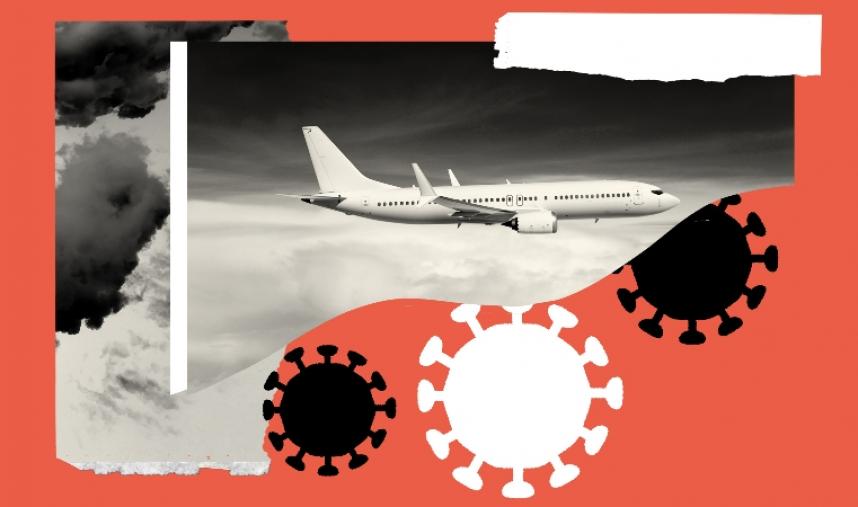
The risk of contracting coronavirus disease 2019 (COVID-19) during air travel is lower than from an office building, classroom, supermarket, or commuter train.
How Is COVID-19 Transmitted?
The virus that causes COVID-19 is emitted when someone talks, coughs, sneezes, or sings, mainly in droplets that can be propelled a short distance, and sometimes in smaller aerosol particles that can remain suspended and travel further. Another person can be infected if these particles reach their mouth or nose, directly or via hands. Transmission via surface contact is also important in some cases.
How Clean Is the Air in Passenger Aircraft?
Air enters the cabin from overhead inlets and flows downwards toward floor-level outlets. Air enters and leaves the cabin at the same seat row or nearby rows. There is relatively little airflow forward and backward between rows, making it less likely to spread respiratory particles between rows.
The airflow in current jet airliners is much faster than normal indoor buildings. Half of it is fresh air from outside, the other half is recycled through HEPA filters of the same type used in operating rooms. Any remaining risk to be managed is from contact with other passengers who might be infectious. Seat backs provide a partial physical barrier, and most people remain relatively still, with little face-to-face contact.
Despite substantial numbers of travelers, the number of suspected and confirmed cases of in-flight COVID-19 transmission between passengers around the world appears small (approximately 42 in total). In comparison, a study of COVID-19 transmission aboard high-speed trains in China among contacts of more than 2300 known cases showed an overall rate of 0.3% among all passengers. Onboard risk can be further reduced with face coverings, as in other settings where physical distancing cannot be maintained.
Risk Reduction Steps by Airports and Airlines
Steps being taken at airports and on board can include temperature testing and/or asking about symptoms (fever, loss of sense of smell, chills, cough, shortness of breath); enhanced cleaning and disinfection; contactless boarding/baggage processing; use of physical barriers and sanitization in airports; physical distancing in airports and during boarding; use of face coverings or masks; separation between passengers on board when feasible; adjustment of food and beverage service to reduce contact; control of access to aisles and bathrooms to minimize contact; limiting exposure of crew members to infection; and facilitation of contact tracing in the event that a passenger develops infection.
Additional steps being studied are preflight testing for COVID-19 and adjustments to quarantine requirements.
Steps Passengers Can Take
- Wear a mask,
- don’t travel if you feel unwell, and limit carry-on baggage,
- keep distance from others wherever possible,
- report to staff if someone is clearly unwell,
- If there is an overhead air nozzle, adjust it to point straight at your head and keep it on full,
- stay seated if possible, and follow crew instructions,
- wash or sanitize hands frequently and avoid touching your face.
For More Information
-
Centers for Disease Control and Prevention
www.cdc.gov/coronavirus/2019-ncov/travelers/travel-in-the-us.html -
World Health Organization
www.who.int/travel-advice